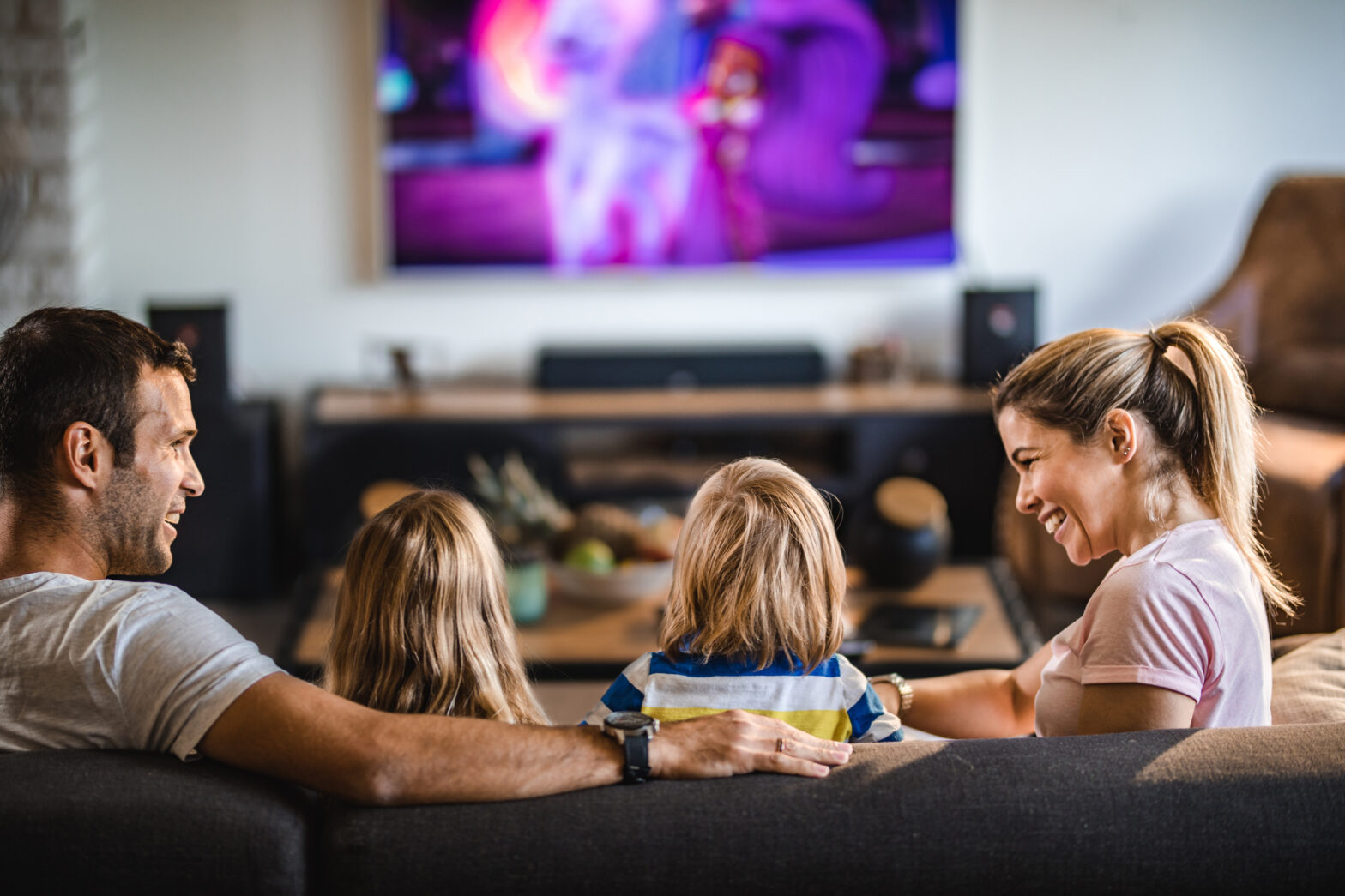The viewership of TV stations will be measured outside the home in the coming years. The technology that will make this possible is tailor-made for the Czech TV market.
In mid-April, the Association of Television Organizations (ATO) signed a contract with ResSolution Group for mobile viewership measurement. The solution, called ReDAM, is based on a mobile phone app that evaluates whether the soundtrack of the measured TV channel can be heard within range of the mobile phone.
Members of the Czech Television Council also learned about the upcoming technology at a regular meeting. Some of them were surprised by the principle of measurement. They then demanded details from the management and assurance that the app would not invade privacy due to the viewership measurement.
In an interview with Lupa, ResSolution representatives reassure that ReDAM will not eavesdrop on anyone, monitor calls, or download data from phones. As the director of the new measurement, Jakub Fulín, explains, the app only needs to compare the audio fingerprint with the TV broadcast. And the company’s director, Tomáš Hynčica, adds that it is not possible to reconstruct a recording from such a print. The methodology and technology have been tested by specialists from France and Great Britain.
What does the contract with the Association of Television Organizations for 2025-2030 entail?
Jakub Fulín: We have concluded a contract to measure TV viewership via mobile app. We track whether the respondent and his/her phone are within range of the TV stations being measured, both at home and away from home. This is the advantage of mobile measurement over a traditional peoplemeter project. It will complement the existing electronic measurement of viewership with data from locations where viewership has not been measured before.
How many people will have the app on their phone?
Jakub Fulín: At this point, we plan to have a panel size of 1,000 respondents in the daily batch of measured data starting 1 January 2026. At the same time, in the second half of 2025, when we build this panel, we will be delivering data from a smaller sample.
How will the app know if a person has encountered a TV broadcast?
Jakub Fulín: The measurement works by having the app record short sound samples from the environment and generate audio fingerprints from them. Then it compares them with the audio fingerprints of the TV stations. If the fingerprint of the recorded sound matches the fingerprint of the TV broadcast, whether live or timeshifted, the viewership of that station at that time is recorded. GPS location, respondent’s home Wi-Fi information, etc., are used to determine whether the viewing was at home or away from home.
Tomáš Hynčica: The app creates an audio fingerprint as soon as the sound is recorded at the respondent’s location. However, we don’t get the recording itself, only a compressed and simplified file. From this fingerprint, we cannot reconstruct the recording or find out what is happening around the respondent. It is a recording encoded as ones and zeros, which is comparable to a TV station’s audio fingerprint, so that we can determine whether there was viewing.
So the app activates at a certain interval, uses the microphone to recognise sounds in the environment, and compares these with the data it has?
Jakub Fulín: The app only records short sections of sound at a certain interval - currently it is 20 seconds of recording and 20 seconds of no recording. It then sends these audio fingerprints to the server for evaluation. This is not the entire audio recording, nor is the file size sufficient to store the complete audio recording.
Tomáš Hynčica: The microphone doesn’t run constantly; there is an algorithm that controls a set cycle, determining how often it activates. The definition is evolving and is part of the technological know-how of the application, but the recording has to be such that the TV broadcast can be recognised.
Jakub Fulín: The intermittent recording is there mainly to save battery. We don’t even need to create fingerprints continuously to identify the station. The app doesn’t access any other data on the phone, it doesn’t record calls, read SMS or get any information from other apps.
When moving outdoors or in a sports bar, a person can be exposed to several stations at once. How reliably can you determine that a fingerprint corresponds to a particular TV station?
Jakub Fulín: The reliability of determining a specific TV broadcast is very high even in noisy environments. The algorithm is designed to work even in places with noise pollution, where different broadcast sources, music or human voices are mixed. At the request of the Association of Television Organizations (ATO), an audit by the French company CESP confirmed very good reliability. The auditors compared viewing figures at home and in noisy bars, recording where they were, at what times and what broadcasts were running on each station. Rates of unrecorded viewership were at lower single-digit percentages, so the reliability of the technology is high.
ATO on mobile measurement: “The output data from the ReDAM project will be an important extension to existing outputs. The data linkage between the two projects will be implemented through a data fusion provided by Nielsen (the current PCEM measurement implementer), with the data being made available to end-users within the standard PCEM project analytical tools (Adwind Kite). As part of the extension of the project, a data model will be developed that will feed tracking information by end-device type into the resulting data based on additional inputs.” (Source: ATO)
How does mobile measurement recognise a station if the same content is being broadcast by different channels at the same time? For example, a sports broadcast may be on both Eurosport and ČT Sport. How does the app assign an audio fingerprint?
Jakub Fulín: We call such a situation a simulcast, and it actually happens in the Czech TV environment. However, sections of the same broadcast start and end at a certain point. So, if we record the sound before or after, for example, a jingle in which the stations differ, then it is clear, and we know which station it was. But, of course, it may happen that the sequence only runs through a segment that ran identically on several stations. Then our internal rules come into play. If, for example, a particular programme was running live on one station and timeshifted on another, which also happens, we assign ratings to the live programme as a priority. It may also happen that there is nothing to assess which station it was, in which case we have to take into account the typical behaviour of that respondent and so on.
How are fingerprints that fail to be matched to any TV station handled? Maybe the viewer turns on Netflix or some other content source altogether.
Jakub Fulín: We plan to measure the same list of stations as in the peoplemeter project. If a respondent and their phone are exposed to, for example, Netflix, that fingerprint will not be evaluated as TV viewership. It would have to be a coincidence that the content watched is running on linear TV within the timeshift we are tracking.
Do you need any cooperation from the broadcasters to match audio fingerprints and TV broadcasts?
Jakub Fulín: No. As a standard, we have reference recordings from several sources to cover various outages. We don’t use any internal information from the TV companies, any of their data.
Tomáš Hynčica: The reference source is the same as for the main peoplemeter project, so that the measurement is as close as possible and there are no deviations.
How do similar technologies work elsewhere in Europe?
Jakub Fulín: We looked at this in the context of the audit. There are some projects around Europe, but there are not that many because this technology is not very common. As far as we know, in Europe, it is taking place in Poland, Norway, Iceland and France.
That sounds like good news that we are a technologically progressive market.
Tomáš Hynčica: Yes, it seems to me that it is, and that’s a good thing. Our researchers and data analysts have high demands on the quality of primary data. We see this in every meeting with our European and global colleagues. For companies like ours, this is only an advantage. Things have to be done properly.
Source: lupa.cz

